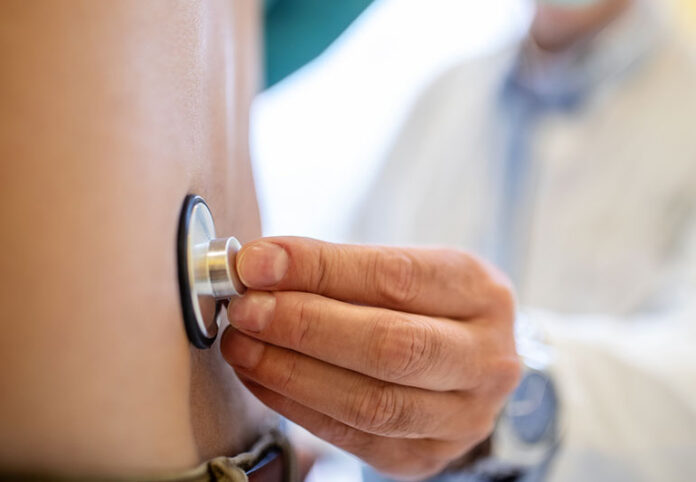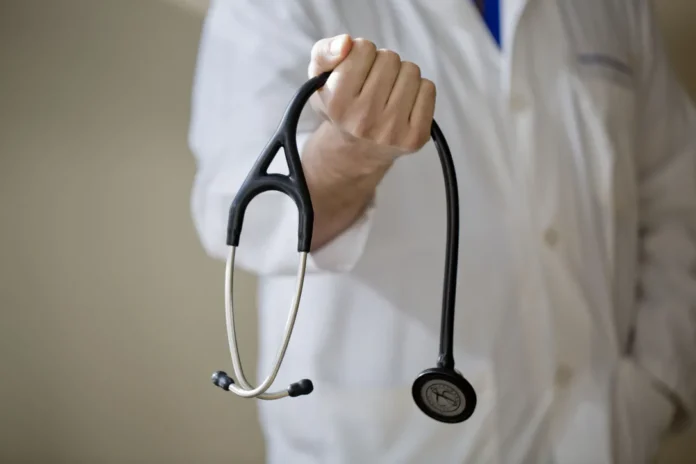Our internal body may produce sounds, low-pitched or high-pitched. Whatever the meaning of whether low-pitched or high-pitched sound our body has, a doctor can answer it. How is it possible?
It is possible thanks to a stethoscope – a great tool medical practitioners use to diagnose certain health conditions. If you are planning to become a doctor, taking classes to become a doctor, or a doctor who needs to buy or replace such a tool, this guide is perfect for you.
How To Use A Stethoscope

In general, this is how doctors use a stethoscope and you can learn it as well.
Step 1. Wearing Stethoscope
When wearing, each ear tip shall be twisted. Its purpose is to seal the ear. When it is done correctly, background noise from the surroundings should be less.
Step 2. Holding Stethoscope
When you hold it, make sure that the chest piece is held by your dominant hand. It must be placed between your index and middle fingers and placed above the knuckle. You will also have to prevent ambient noise from interfering, so keep it still by curling your thumb under its tube.
Step 3. Where To Put Stethoscope
Ideally, you shall place it against one’s bare skin. If necessary, you can place it on over one layer of clothing.
Step 4. Determining The Side
The decision will depend on what needs to be examined.
For instance, the diaphragm is used to hear breath and normal resting heart rate or rhythms under a normal breath. The bell is ideal for detecting wheezing sounds and other abnormal sounds that may occur other than sounds from a deep breath. For cardiac examination, both sides are used, with the diaphragm first then followed by the bell.
Introduction To A Stethoscope

HealthCanal highlighted that a stethoscope is one of the essential tools that doctors use to diagnose certain medical or health conditions. This gives the doctor an idea about the possible situation from which a patient is suffering. More specifically, it is through a stethoscope wherein a health practitioner can listen to internal sounds produced within the body. Through such a process, doctors can identify whether the patient’s particular parts of the body are having normal sounds or abnormal sounds.
Moreover, doctors can use a stethoscope to hear things such as breath sounds, heart sounds, lung sounds, and bowel sounds. It may be surprising to you, but doctors, together with a sphygmomanometer or blood pressure cuff, can manually measure the patient’s blood pressure.
Its Components
Let us know more about stethoscopes by familiarizing ourselves with their components. To make it easy, we focus on its three main parts.
The Chest Piece
This is the rounded part of the tool. Its primary function is allowing doctors to hear lung and heart sounds. It consists of two parts. First is the bell, which helps doctors hear low-frequency things. The other part is the diaphragm, which allows doctors to hear high frequencies.
The Headset
To complete the sound transmission, there is a headset to work with the chest piece. It is where doctors hear different sounds. It consists of three parts: ear tubes, ear tips, and tension springs.
The mentioned three parts work together and, are interconnected. For instance, the primary function of tension springs is to provide comfort to the user by keeping the ear tubes apart from each other.
Meanwhile, ear tubes assist transmission by carrying sounds from the rubber tubing to the ear tips. Lastly, an ear tip is the one a user inserts into one’s ears.
The Tubing
Tubing is a stethoscope’s component that keeps the chest piece and headset connected. Through it, the doctor can hear the internal body.
Its Function
Measure Blood Pressure
This was mentioned earlier, but do you know that measuring blood pressure through this may be done incorrectly? You can use the stethoscope to listen to the heart or heartbeat below the cuff, at the brachial artery, when the cuff has already inflated. First, you would hear Korotkoff sounds; then, the volume would drop drastically. By that, you can get systolic and diastolic pressure. Do not read numbers when the sound stops, as diastolic pressure will turn too low and you will not get an accurate result.
Identify Lung Sounds
Through a stethoscope, doctors can identify whether there is lung inflammation, lung tissue damage, or airway blockage. For accurate results, doctors examine six pared areas on the chest and seven at the back, starting above the clavicle and going down.
Identify Heart Sounds
Heart sounds are not only limited to detecting an abnormal heart rate. Through a stethoscope, physicians can also detect heart murmurs. We all know that a heart murmur can be a symptom of a heart condition.
Identify Bowel Sounds
A stethoscope can also help doctors and patients with bowel obstructions. Loud and bubbling sounds are often considered normal bowel sounds. Otherwise, high-pitched bowel are usually abnormal, and the patient may need medical attention due to bowel tissue damage. Some may need to undergo abdominal surgery. However, hearing low-pitched sounds may be subjected to more tests.
Detecting Abnormal Blood Flow
Through a stethoscope, doctors can hear a whooshing sound, which can be a sign of vascular problems. Likewise, problems in Carotid arteries can be a symptom of arteriosclerosis, aneurysms, and other serious human heart problems.
Liver’s Size Measuring
Stethoscopes can serve as a helping tool to determine the liver’s length at the nipple line. The tool should be placed beneath one’s right nipple while the index or middle finger is placed directly in the nipple line.
Hearing Aid
The stethoscope is beneficial for medical professionals with hearing problems. It can help them hear better. It acts as a hearing aid for doctors and other medical professionals with hearing impairments.
Should You Use Stethoscopes When You’re Not A Medical Specialist?

Using a stethoscope, even electronic stethoscopes – the one used to enhance traditional auscultation, requires much knowledge because you will be dealing with different sounds and their meanings. Hence, if you want to use it, the tool should only be used when manually measuring blood pressure.
Nevertheless, you shall still know about it, such as when to read the numbers.
Meanwhile, those undergoing training for a medical practice may use one as needed.
Conclusion
These are the up-to-date information about using a stethoscope, the essential device medical practitioners use. Once you have one, you can simply use it and maximize its functions.









